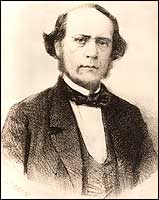2.3.2 Ramón de Palma (1812 – 1860), “An Easter in San Marcos”

This story was published in the Havana magazine “El álbum” in 1838, and with it Cuban narrative acquired its own character both in terms of its organic structure, despite formal deficiencies (unusual length of dialogues, problems in the handling of time frames, hypertrophied role of the narrator, which denote the immaturity associated with the cultivation of the genre on the Island) and in terms of the locations and characters associated with the story.
The plot centers on the drama of the seduction and subsequent oblivion of a rather middle-class young lady, Aurora, by a more tropical Don Juan, Claudio, who represents the type of son of bourgeois parents fond of leisure that degenerates into vice, women, and especially gambling. After seducing Aurora, he falls in love with Rosa Mirabel, who is married but borders on infidelity, stopped only by Aurora’s fury, which surprises them in a secluded spot in the fields of San Marcos, about to give free rein to her passions.
In this incident, Rosa flees, and Claudio suppresses Aurora’s screams, which threaten to create a highly embarrassing situation for him. Due to the force applied by Claudio, Aurora faints, and he flees, leaving her for dead. She survives and recovers after a period of convalescence, during which Claudio suffers remorse, coupled with fears that his involvement in the events will be discovered. He is even willing to consent to the marriage, which they eventually do, but they still end up separating years later, and the protagonist dies sick, poor, and vicious.
The text, with a clear moralizing intention, sparked controversy and received harsh criticism for its crude portrayal of the ruffian, representative of a type emerging from a social class that defended itself against its own miseries, and especially of the female characters, none of whom adhered to the ideal of virtue that was intended to be instilled at all costs in the young ladies of that time.
Likewise, contemporary critics, even in his time, pointed out that he completely ignored the theme of slavery, presenting only the upper echelons of society. Two or three Black characters appear obliquely, in the background, in the work, but the absence of their contradictions can suggest a false white predominance.
Ambrosio Fornet says about the work: “Despite his inexperience, Palma managed to season the tired scheme of the Seducer and the Victim with all the ingredients of the genre: the cynical intrigues of the libertine, the cunning naiveté of the procuress, the torment of the defiled maiden, the astonishment of the astonishing events, the predictable moral… In a sequence like the one with the runaway horse, the modern eye thinks it can even perceive the structure and rhythm of Western films. But Palma wrote for another audience and did not take into account their low levels of tolerance, especially regarding the institution of marriage and the conduct of women.”
One might wonder whether the author was aware of the controversy the text could provoke and the detractors who would have felt the realistic brushstrokes with which he drew the characters, even without delving deeply into any of them and within the rise of romantic narrative, to which he makes some concessions. The intrinsic literary value of the work is undeniable, as it gives the narrative real aesthetic significance and captures vernacular clichés.








